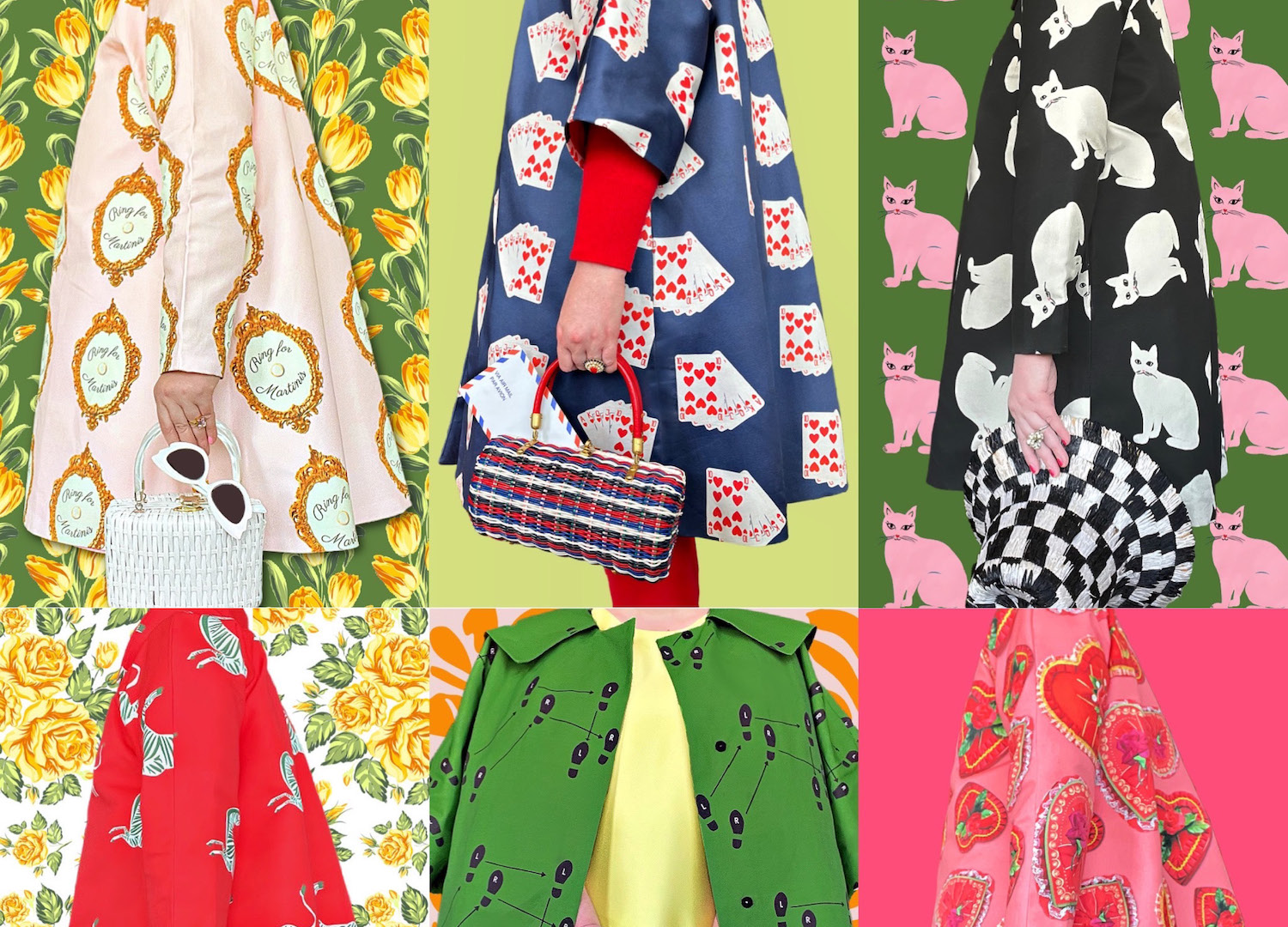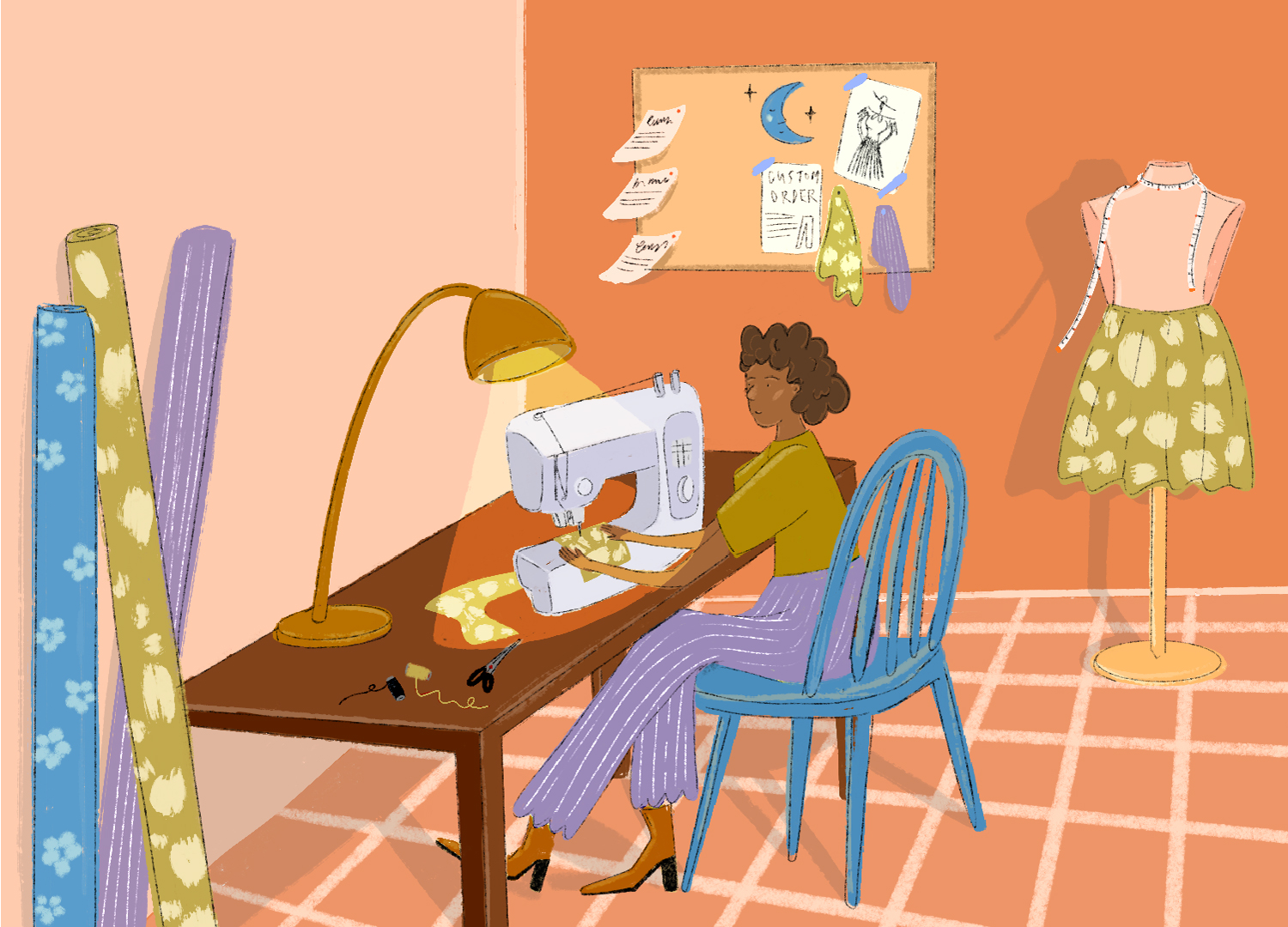
Small Business, Big Dreams: A Creative’s Guide to Building a Brand
words BONNIE LISTON above MADELINE WHITE
Some of us harbour a secret dream of starting a side hustle. One that maybe expands into a main hustle, allowing us to escape the rat race of 9–5 employment to become the masters of our own occupational destiny, dedicating our precious time on Earth to creative pursuits we are passionate about.
But starting a small business can be a scary prospect, especially if you’re a left-brained artiste who has never pictured yourself as a number cruncher thriving in a business school environment. That’s why we’ve put together a series, a crash course if you will, of small business essentials – with special help from our friends at Spoonflower.
Spoonflower’s Creative Marketplace is filled with the work of artists and creatives, and in return, thousands of entrepreneurs, makers and businesses, big and small, are powered by Spoonflower’s on-demand digital print process – on average, nearly half of their yardage is sold to small business owners! They know their way around business and they love to support and encourage small business owners with their bi-annually endowed Spoonflower Small Business Grant, or with the free distribution of information!
In this series, tailor-made for those small business creatives with big dreams, we’ll cover everything from balancing the books to boosting your buzz. The subject of today’s lesson is building a brand – why it’s so important to have a strong brand and how you can go about developing one.
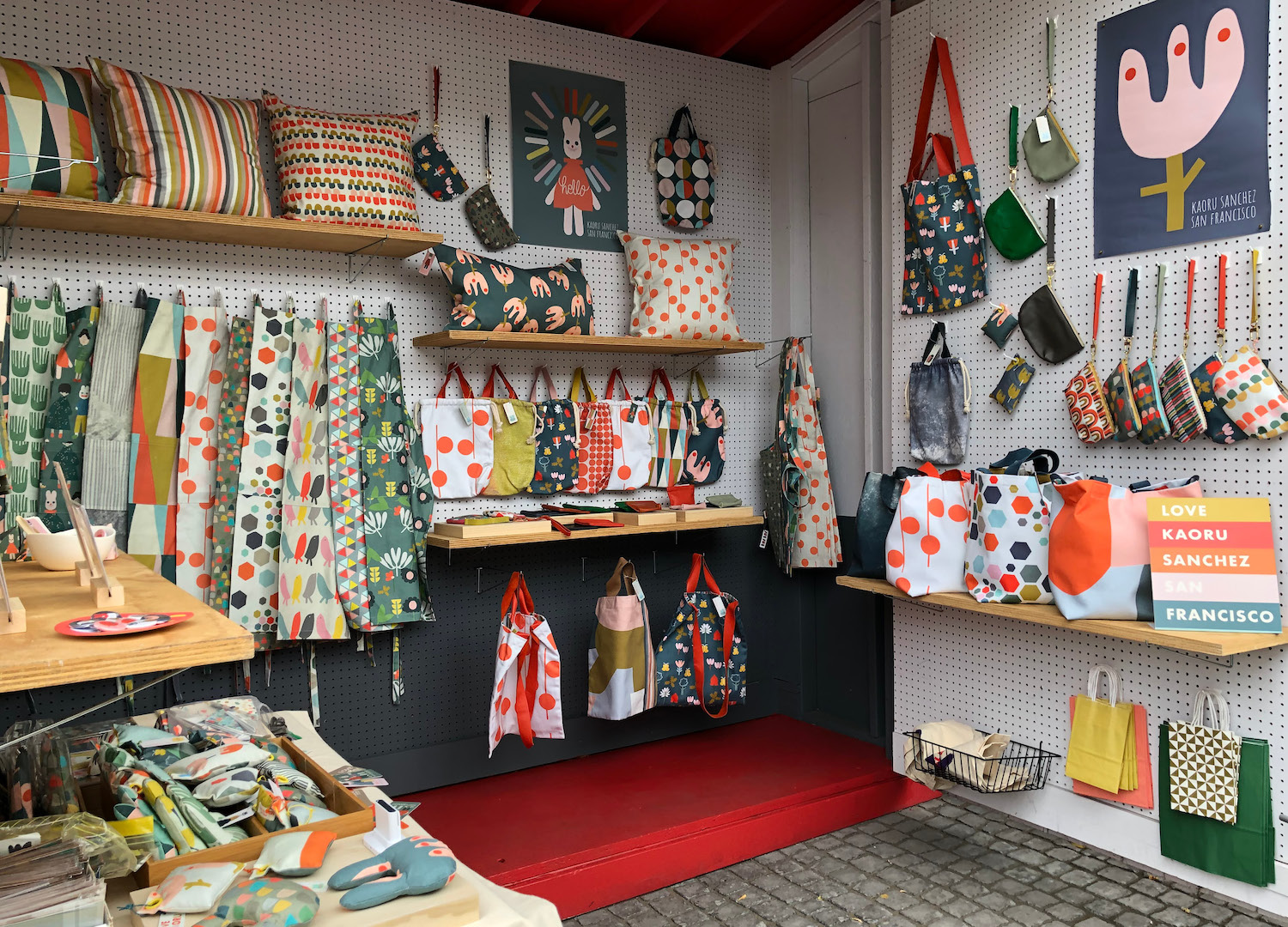
above KAORU SANCHEZ MAKERS ROW STALL, COURTESY OF KAORU SANCHEZ
“It usually starts with a great idea, that’s the easy part,” says Sarah Ward, Senior Vice President of Brand Marketing at Spoonflower. “Then follow logo design, colour palettes and slogans because we want to create an identity and conjure this idea into existence. Giving your brand physical attributes makes it real, but moving too quickly steals the opportunity to resolve important questions. Beginning with people and community, ask yourself, ‘What is the story I want to tell? Who will help along the way? Does my concept solve a problem or address an issue? Where will we gather and how will we get there?’ These questions are fundamental to laying a solid foundation in the beginning stages of your brand-building process.”
It usually starts with a great idea, that’s the easy part.
“Kelly Chin (Kaoru Sanchez) and Jennifer Diederich (SUITE) are two creatives who use the Spoonflower platform to power their handmade businesses,” Sarah continues. “When you head to their Instagram, Spoonflower shops or websites, you’ll notice they each have specific and distinct points of view on design and branding.”
Kelly is the designer and maker behind Kaoru Sanchez, where she creates modern, colourful textiles to adorn everyday items, giving them that extra pizzazz that keeps customers treasuring them for years to come. Jennifer runs whimsical womenswear brand SUITE where she masterfully weaves a vintage New York fantasy with her party dresses and signature ‘Quick Escape Coats’.
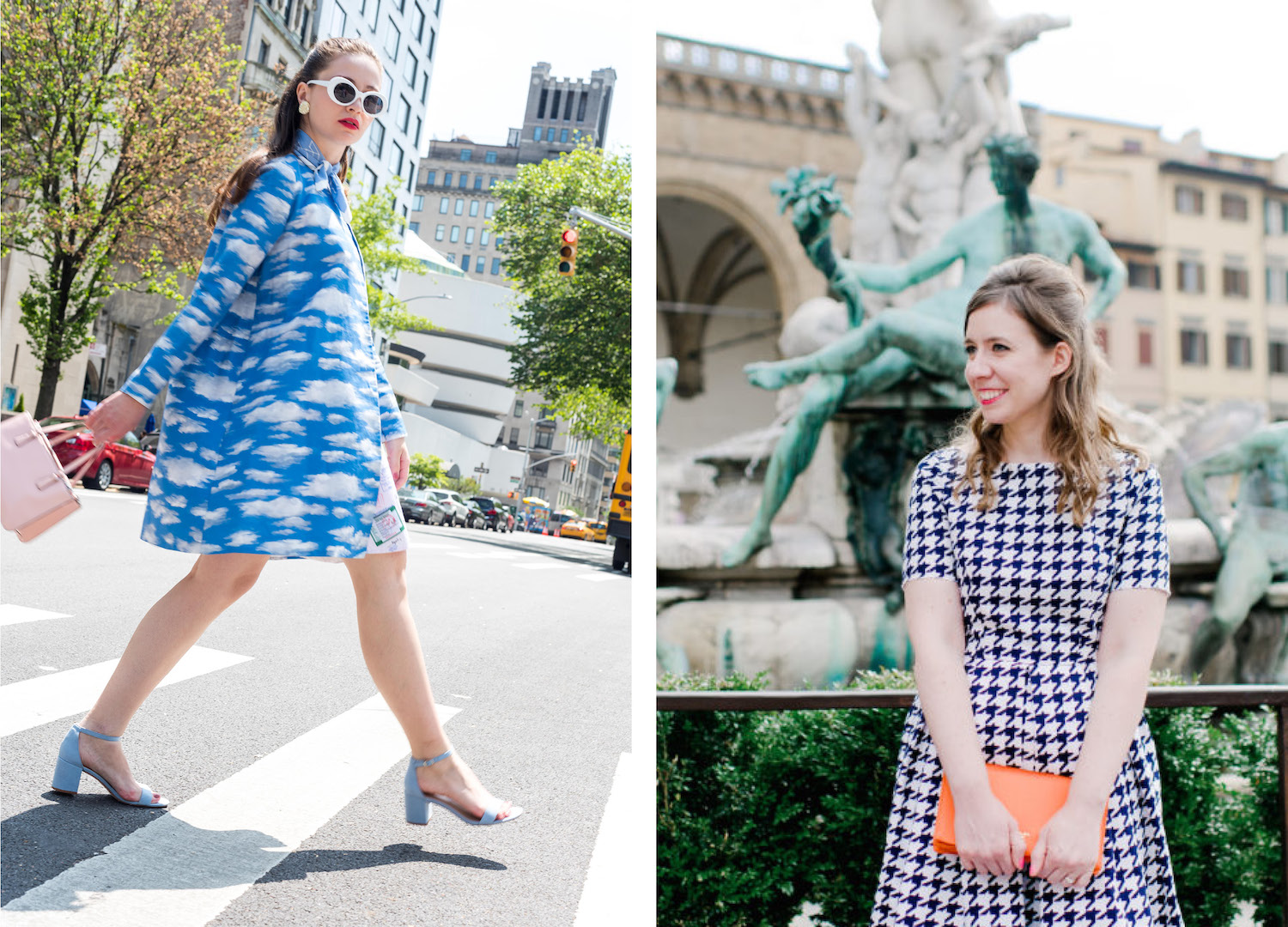
above SUITE CLOUDS COAT (left) AND JENNIFER DIEDERICH (right), COURTESY OF SUITE
SET YOUR COMPANY APART
Good branding can make an incredible difference to the success of a small business. As Kelly shares, “Branding has the ability to set your company apart from all the rest.” It gives “your business an identity; something for people to relate to and interact with,“ Jennifer continues.
“When I was a recent judge for the Spoonflower Small Business Grant, there were so many entries that were for businesses that sold neck scarves for animals,” Jennifer continues. “The price points and products were very similar, so obviously branding and brand story were the deciding factors. The customer will have a similar experience. In a sea of pet accessories on platforms like Etsy, you have to stand out to be the one that makes the sale.”
The stronger your brand, the more likely you are to catch potential customers’ eyes and stick in their memory. But what separates a strong brand from a weak one? Kelly and Jennifer both highlight originality, uniqueness and the importance of a strong brand story.
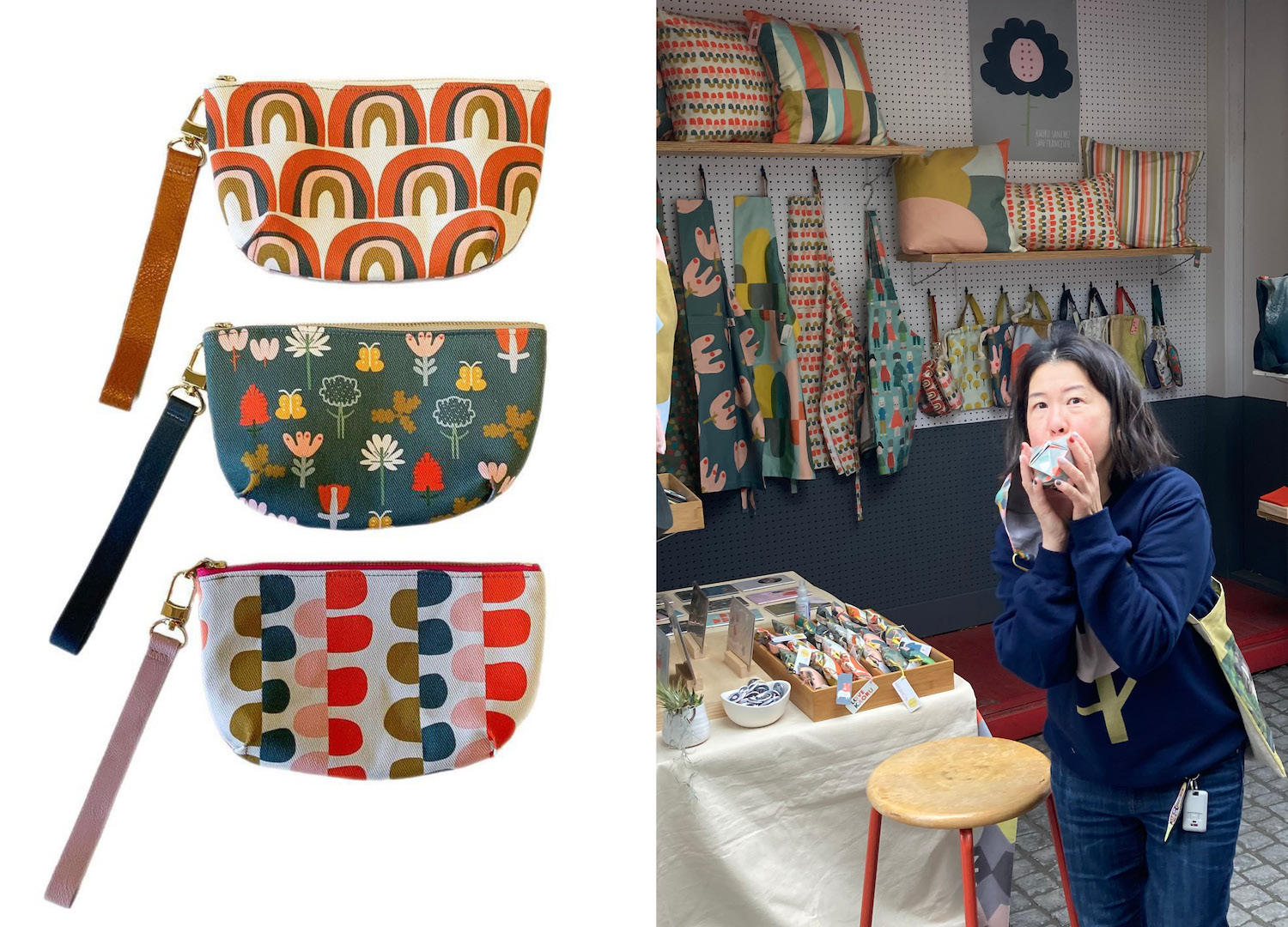
above KAORU SANCHEZ WRISTLETS (left) AND KELLY CHIN (right), COURTESY OF KAORU SANCHEZ
TELL AN HONEST STORY
“I think a strong brand includes first an original idea for something missing in the market, then secondly builds a strong connection with the customer, both present and future,” Jennifer says. “The style, story, colours and ideals must be relatable to the type of customer you are looking to attract in order to create that brand bond and loyalty.”
According to Kelly, a strong brand emphasises quality and tells an honest story: “Try to create branding that is friendly and trustworthy with a healthy dose of fresh ideas and creativity. I think these are the qualities needed to stand out from all the rest.”
So where does one begin? When looking to develop your own brand, Kelly recommends starting by looking in. “Start with your imagination and the things that make you happy,” she says. “What is the story you want to tell about your business? What colours do you like? What shapes? What will you name your brand? What artist or brand do you admire?”
A strong brand includes first an original idea for something missing in the market, then secondly builds a strong connection with the customer.
On the other hand, Jennifer follows a more outwardly focused approach, “I started by envisioning the customer in every detail possible,” she shares. “I knew I wanted to create conversation-starting prints in fun colours and retro silhouettes, so I thought about where my customers would wear these coats. I pictured them glamorously fleeing a rowdy party with their coats draped over their shoulders. The coats would have to be simple to throw on, so they would have no belts, buckles or buttons, just snaps for a ‘quick escape’ – all while looking extremely chic and leaving them wanting more. Hence the ‘Quick Escape Coat’ was born. This fun way of describing a swing coat has created a desirable emotion for the brand to base itself around.”
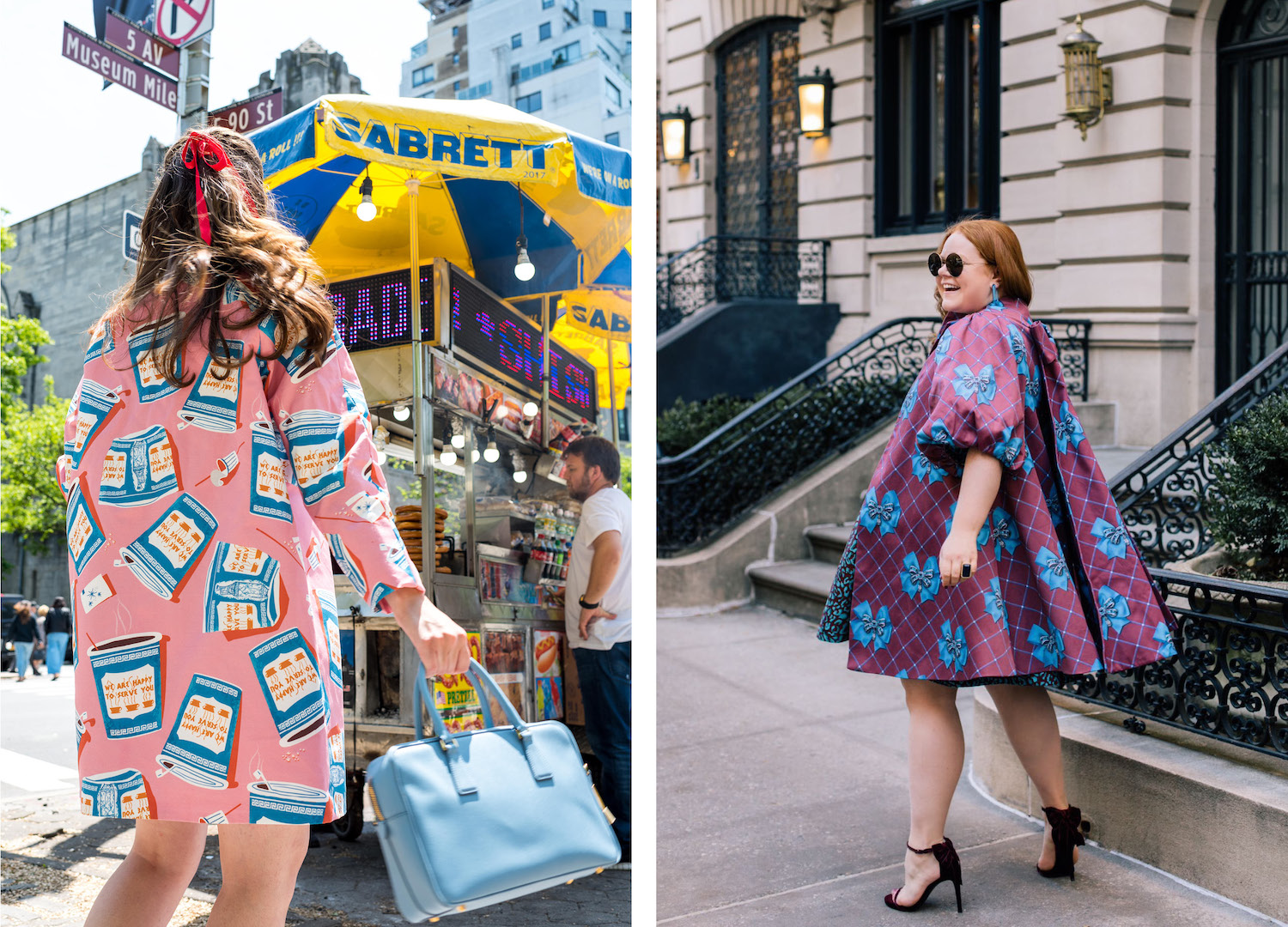
above QUICK ESCAPE COATS, COURTESY OF SUITE
COLOUR YOUR WORLD
You can break it down even further by considering key brand components like colours and fonts to use across your business.
“For any brand, colour most definitely sets the mood,” says Kelly. “When choosing your brand colours, choose colours that evoke the feeling you want to express with your products,” Jennifer concurs. “You could search for things like, ‘What colour evokes happiness?’ Within that colour family, is there a shade that speaks more to your brand? Bright colours are energising and fun, pale colours are calming and peaceful.”
“Once you find four to six colours you like, trying to remain in the same tonal feeling which will help with cohesiveness, sit with them. I wouldn’t recommend just jumping into a commitment with them on the first day. See how they work with all aspects of your branding. If you have a label, will the colours work well with a wide variety of your products? Are these colours enjoyable to see on a computer screen? Would you like to be surrounded by these colours at your booth during a trade show? Once you choose your colours, be sure to pull from them for all of your branding needs.”
When choosing your brand colours, choose colours that evoke the feeling you want to express with your products.
“I utilise a modern colour palette with my collateral that goes back to my collection of fabric,” says Kelly. “My business cards, hang tags and stickers easily match up with the product, keeping it all cohesive.”
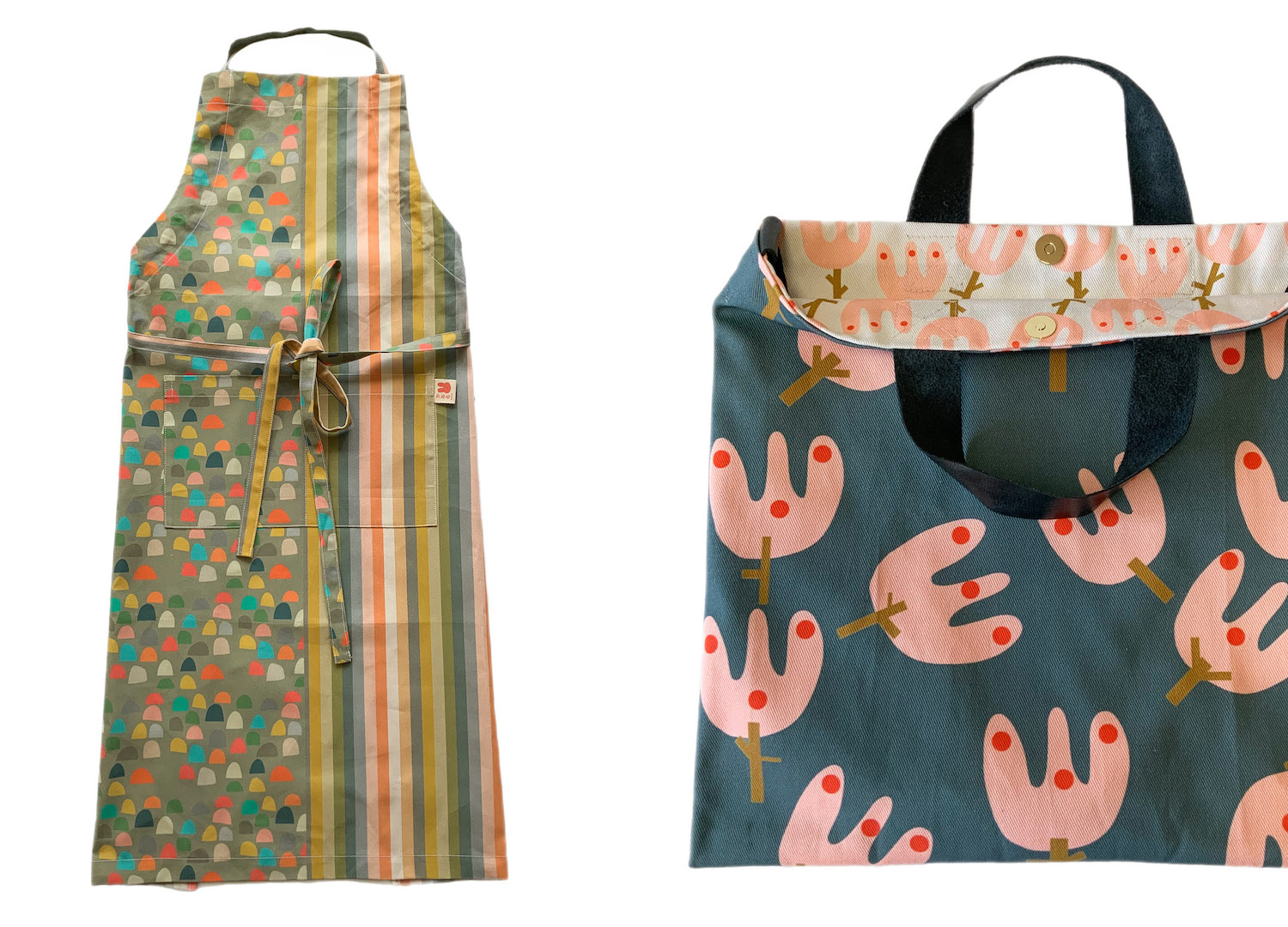
above APRON AND TOTE BAG, COURTESY OF KAORU SANCHEZ
THE FONT OF KNOWLEDGE
When weighing up fonts, the unspoken feelings and vibes they convey are important, but more so is the customer’s ability to read what they actually say – legibility is key.
“Find a typeface that fits the personality of your brand and make sure the font is easy to read. I like using Amatic, Comfortaa and Chelsea,” recommends Kelly.
“I personally looked at old vintage movie posters and those gorgeous gold typefaces on old school restaurants for inspiration for fonts,” Jennifer adds. “I wanted the fonts to evoke the feeling that I got from looking at those things. The fonts should also be clear to read, work well online for websites and be easy to print on multiple kinds of promotional objects – labels, flyers, big signs and small signs. You should choose two typefaces to work with on a consistent basis. This will help keep things cohesive. That cohesiveness will help create a strong brand identity.”
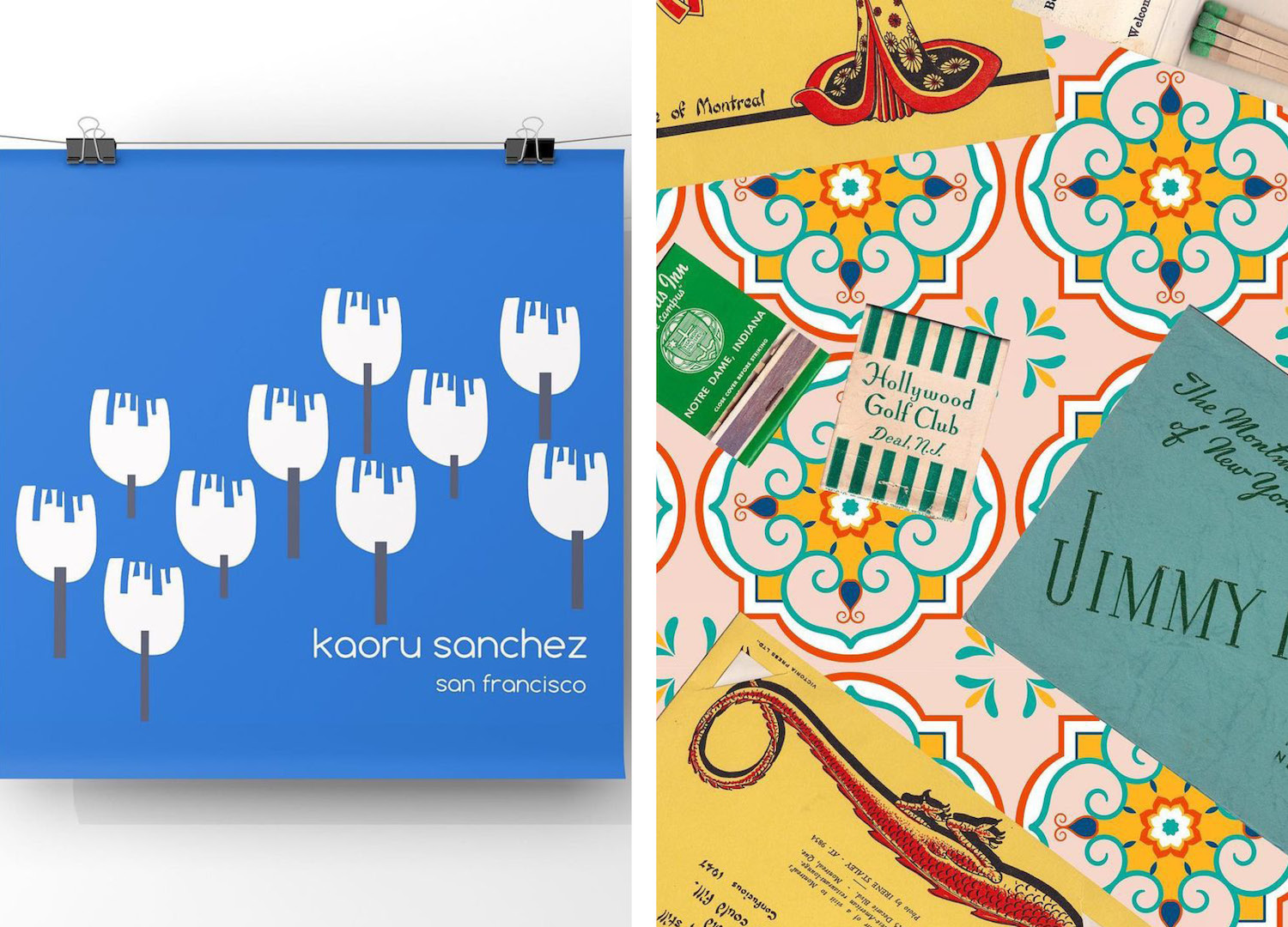
above NOTEBOOK (left) AND FABRIC PRINT (right), COURTESY OF KAORU SANCHEZ AND SUITE
DON’T GO IT ALONE
There is also the possibility of outsourcing, or seeking help from a professional brand designer. “I worked with a designer, Monica Francis, to create a brand board for SUITE,” reveals Jennifer. “There are colours, fonts and logos all clearly displayed. I pull from this board all the time when creating emails, promotional cards or website updates. It also speeds up the process of creating new branding materials.”
However, this can be an expensive outlay, particularly at the beginning of a new business. “Make sure you have a strong product and a real customer base before investing in branding,” cautions Jennifer. “Don’t waste money making something pretty that needs more time to develop.”
“Try to design as much as you can on your own before handing it off to a brand designer,” adds Kelly. “It also helps to break it down into stages, moving forward with what is most necessary and then tackling the next part. I took my creative friends who started before me out to coffee and asked for advice. I used creative sites to learn tutorials and retraced the steps of the ‘famous’ creatives I most admire. Those exercises helped immensely and I’m still learning as I go.”
READ MORE: HOW SURFACE PATTERN DESIGNER ERIN KENDAL TURNED A SIDE HUSTLE INTO A THRIVING CREATIVE BUSINESS
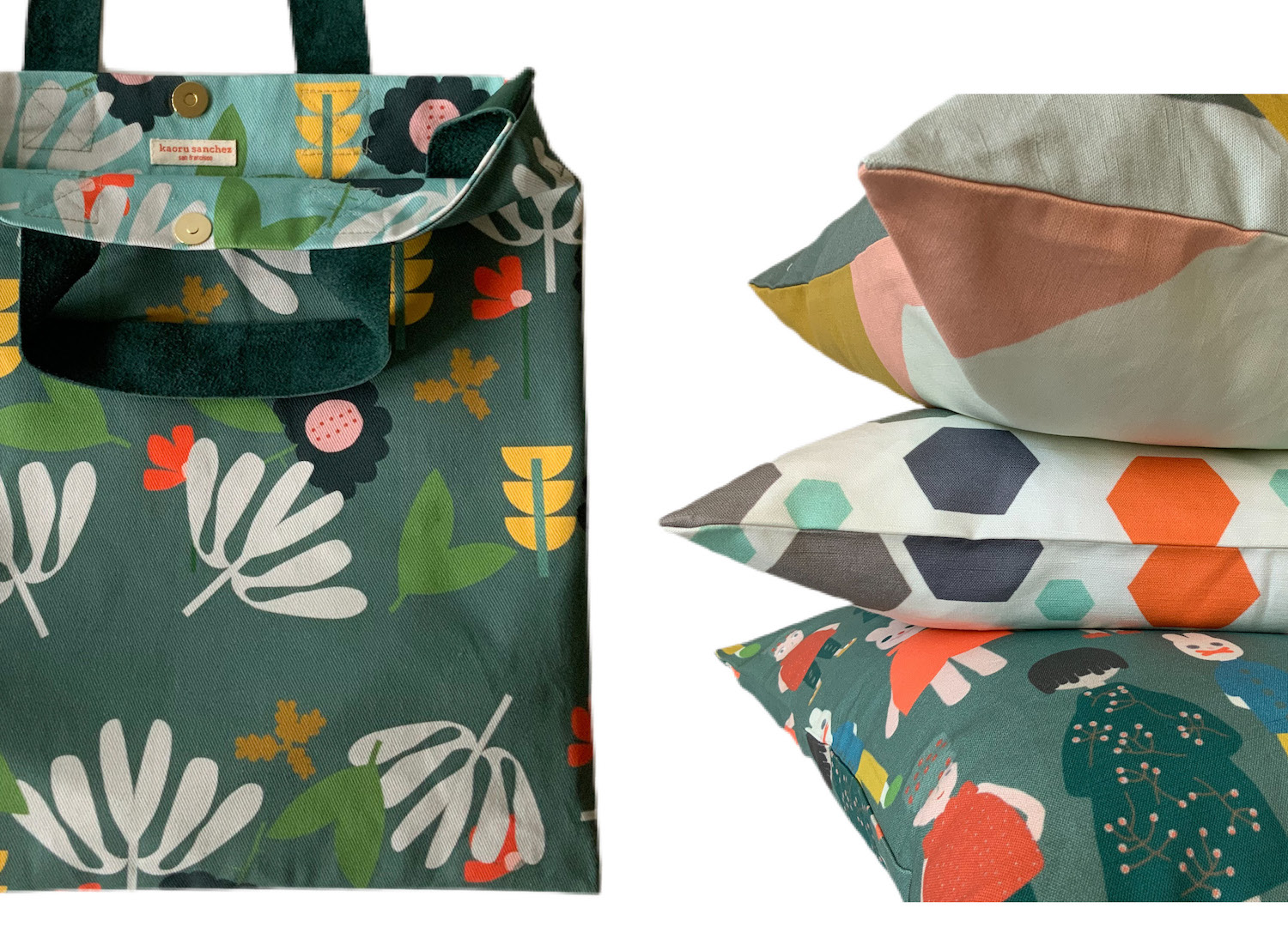
above TOTE BAG AND PILLOWS, COURTESY OF KAORU SANCHEZ
THINK OUTSIDE THE BOX
Both Kelly and Jennifer stress that brands are ever-evolving beasts – and that’s a good thing. While you shouldn’t be flipping through ideas fast enough to confuse your customers, there’s no need to be boxed in by brand choices made years ago. You can continue to tinker and play around, see what your customers respond to and keep an eye out for opportunities to strengthen your brand.
“Social media is an obvious way to quickly strengthen a brand’s vision and story,” says Jennifer. “I created a visual image formula for my Instagram. Now when I go to events, people refer to my detailed, side-profile style of photography. In Instagram Stories, I share things that are complementary to my brand – a SUITE lifestyle. I share estate sale finds that will become print inspirations, martini hour at Bemelmans (an iconic New York bar) and vintage photos of my family with stories of when my great-great aunts were out causing a bit of trouble. These stories are the opportunity to interact with my customers and strengthen the ideas behind the clothing.”
Beginning with people and community, ask yourself, ‘What is the story I want to tell? Who will help along the way?’
Small details can also make a big difference, Kelly advises. “[You can make] little tweaks like rounded corner business cards over the traditional square card; a friendly return policy; a personal note from you or a little gift with every order that goes out; offering similar items a couple of dollars less than the competition if you’re able. I use all the above and it’s made all the difference.”
“You don’t have to spend a lot of money to be intentional,” Sarah emphasises. “Being thoughtful and honest with yourself at this stage can help you develop a mantra that holds you committed and on course when the waters get stormy. Not only will this mantra help you define your goals, determine the ultimate sustainability of your idea and predict the likelihood of success, but it will also set the stage for lasting design and branding decisions that are more likely to resonate with your audience.”
“Stay true, be patient, be open to change, handle feedback the way you might handle advice, keep plugging away at the unique aspects of your brand, continue to invest your time and energy into it and don’t forget to celebrate the wins (big or small) along the way,” Kelly counsels. “And lastly, don’t forget to copyright your work!”
